

NICK HAYES
Books and Articles
Looking for Leningrad (an excerpt) book due out 2015
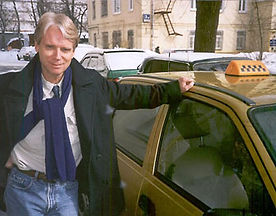
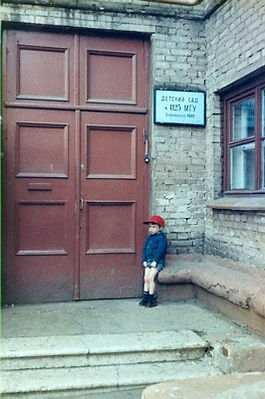
...A blend of Eisenhower’s politics and the theology of Bishop Fulton Sheen shaped the cultural environment of my childhood and defined the Russians as nothing less than communist devils. I remember two images. One of the Sisters showed my class a photograph of old Russian women with their heads wrapped in scarfs which we misnamed “babooshkas” and thus confused the Russian word for grandmother with the traditional women’s headdress. This particular nun had a case against the girls in our parish school who would wear only dainty kerchiefs on their heads to church rather than the proper berets that came with their school uniforms. She declared that the proliferation of women wearing these “babooshkas” in the US was a communist plot. Incidentally, though Irish, she also felt that she could not support John Kennedy for President. He had not attended Catholic schools and was therefore probably prone to communism. Another image is more menacing. It appeared in my fourth grade civics text book. It depicted Red Army soldiers crushing Russian boots a Eucharist inside the sanctuary of a Hungarian Catholic Church. Yet, this provides the key to my interests in Russia: a curiosity for the dark side from whence came the Russian devils of my childhood.
During my college days, I gradually poured this old curiosity into new academic bottles. For the record, I believe my first encounter with Russian history came in a lecture by old “Prof” Heininger in my first year Introduction to Western Civilization course. In a lecture on Tsar Peter the Great, “Prof” dwelt upon the infamous anecdote about how the Tsar banned the wearing of beards and would rip the beard off the faces of any Russian man who dared to show one in his presence. That only goes to show, boys,” “Prof” concluded, how thin is the line that separates civilization from barbarism. I always say that my initial academic interest in Russia came from a love for Russian literature. True, but I can’t remember where I first encountered Russian literature. I have a vague memory of reading a Classic Illustrated Comic version of War and Peace in my childhood. Otherwise, I know that at one time and within a few days of each other I read Vladimir Nabokov’s Speak Memory and Alexander Herzen’s My Past and Thoughts. And that was it. I dropped my course in German and switched to Russian and started on the less travelled academic road that led a Ph.D. in Russian history at the University of Chicago, Russian studies at the Sorbonne, and then a third and truly astonishing chapter as a year’s residence as a visiting scholar – or “stazhor” – at Moscow State University in 1978 and 1979.
This chapter – my year with my family as an IREX visiting professor at MGU, or Moscow State University – was my Russian baptism, an immersion baptism into Russian life. I arrived in Russia with my wife Marcia and our two children – Kevin aged twelve weeks and Patrick aged two and a half. (Slides: Patrick at detskii sad; Kevin on the Russian sled; the boys in my arms). The rot of communism was then palpable. At the moment of his arrival in the old Sheremeteva Airport through his entry into our “bloc,” or university dormitory rooms, Patrick screamed. A colleague observed Patrick’s shrieks and commented, “Patrick was the only one who had the right, sane response to arriving in Russia. Scream bloody hell!” To be candid, my progress on research that year was marginal. I did trudge Monday through Friday to the Academic Reading Room of the Lenin Library. Its card catalogue contained around five entries for my research topics – Soviet political history in the 1920s. Although I did manage to eek out enough to produce my first publication, perhaps the most memorable contribution of the Lenin library to my sense of Soviet history was that it was in that room where I met Molotov and shook his hand.
In actuality, I spent my energies in that year, much as an ordinary Russian would have standing in lines for shopping, searching the stores for anything, and negotiating with harsh Soviet realities for the daily needs of my family. I became an expert on how to locate Soviet disposable diapers – which I learned the hard way were not called detskii pantilon but pod-guzniki.
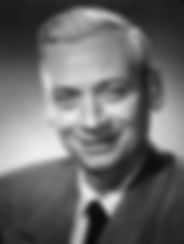
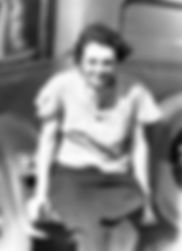



AND ONE FINE MORNING -MEMORIES OF MY FATHER
Nodin Press, March 2010
It eluded us then, but that's no matter--tomorrow we will run faster, stretch out our arms farther....And one fine morning-So we beat on, boats against the current, born back ceaselessly into the past.
F. Scott Fitzgerald, The Great Gatsby
In death, there is always hope.
An Irish Proverb
There was a time, not so long ago, when Irish Catholic priests strode as giants among men, and when fathers, cut down in mid-lifeprime, were heroes to their young sons. This affectionate and insightful biography and tribute to Minneapolis architect, artist, and family man Mark Hayes by his son Nick spins a tale of the mid-50s which resonates with warmth and loss a half-century later. The author shows not only the life of a son of Ireland achieving the postwar American dream, but encapsulates the history of Irish emigration to the Canadian and American prairies and beyond. And One Fine Morning illuminates how a man defines himself as a professional, a family man, an American. Although the memoir begins in 1947 in Minneapolis, the sense of time is fluid: everything which made Mark Hayes and his family who they are, and all that son Nick becomes, are vividly and evocatively chronicled in this heartfelt tribute. At once truthful (sometimes painfully so) and loving, we see a complex portrait of a man balancing his artistic dreams and ambitions against the societal obligations of family and community. Nick Hayes draws Northside Minneapolis (and later, the southwest suburbs) with great vividness and energy. Community players spring to life: priests like Father John Dunphy of Ascension Parish ruled their flock with a muscular fist within a velvet glove. Irish-Amercians were held to a high standard in their churches, on the football fields (the section on sports at "D", as DeLasalle High School is called by alums, is full of rough-and-tumble glory), in their work and service to their community. The Irish had finally made it in America. No longer marginalized caricatures, they belonged in a country which was soon to elect the first Irish Catholic president, John F. Kennedy. Much was expected and much delivered by the sons and daughters of prairie immigrants. We follow Mark Hayes from a farm background, excellent high school education at "D", a World War II naval career, and a brief but stellar career as the architect of postmodern buildings (some of the most soaring passages are about modern architecture and Mark Hayes' collaboration with famed Finnish architect Elial Saarinen). Nick's father died at the age of 47, a life of promise cut short by a combination of congenital heart disease, Camel cigarettes, martinis and a hard-striving personality. His son inherited his father's eye for detail, wry humor, and the gift of telling a great tale. This memoir would make a great Christmas gift for anyone interested in local history, Irish-Americans, and good storytelling: in short, for anyone.- SHERRY LADIG, frequent reviewer for this column, is an Irish trad. musician and former reviewer for the Hungry Mind Bookstore's newsletter, Fodder.
REVIEWS
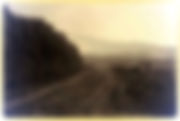
"Intelligent, insightful and evocative, And One Fine Morning is a nuanced, beautifully crafted family chronicle seamlessly woven into the larger tapestry of Irish, American and regional history. Nick Hayes manages to marry tenderness and truthfulness--qualities often at odds--into an elegantly told and deeply moving story that is engaging and enlightening from first page to last. And One Fine Morning is, quite simply, one of the best memoirs I've ever read. This is a book that will endure. Bravo, Nick Hayes!" PETER QUINN, author of Looking for Jimmy A Search for Irish America,The Banished Children of Eve, and Hour of the Cat